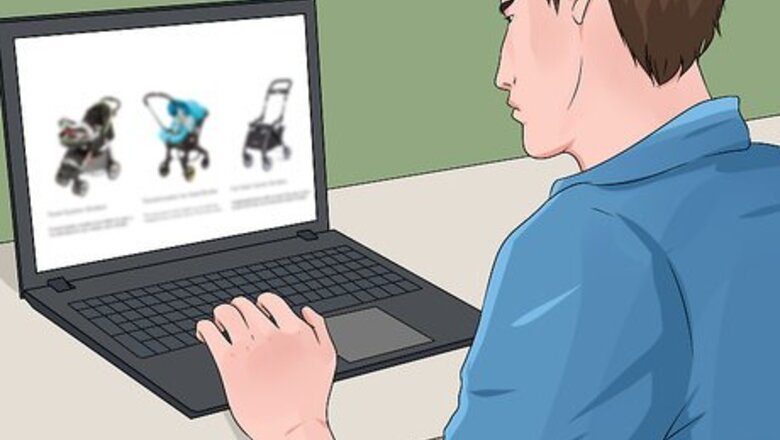
views
Choosing a Type of Stroller
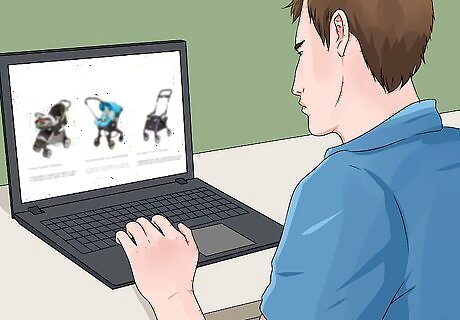
Conduct research. Search the websites of different stroller companies for testing videos to see how different stroller designs perform in a variety of environments, from navigating neighborhoods to boarding airplanes. While you are online conducting research, consider checking parenting chat rooms for tips and stories from parents around the world. If your child goes to daycare or preschool, ask the center if they have space to accommodate strollers. Some schools only have room for a certain type, such as an umbrella stroller.
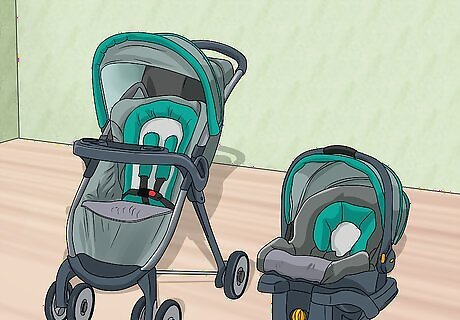
Consider a travel system stroller if you are constantly on-the-go. Travel system strollers can also break down into car seats. This style of stroller is a particularly useful investment, as it can be used from infancy into toddlerhood.
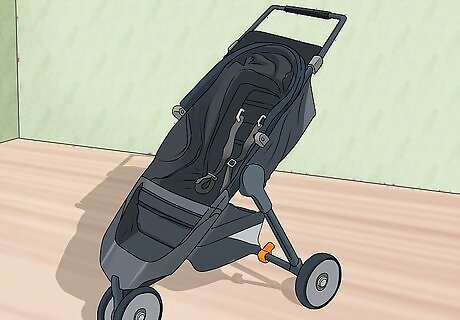
Choose a jogging stroller if you live an active lifestyle and exercise frequently. These three-wheeled strollers have a fixed front wheel and a hand-brake, in addition to the traditional parking break. This type of stroller is heavy, so practice unfolding, folding, and moving it to ensure it's a good fit for you. Avoid joggers if you don't exercise. Their fixed front wheel can make them a challenge to maneuver on varied terrain. Avoid jogging strollers if you have a child under 1 year old.
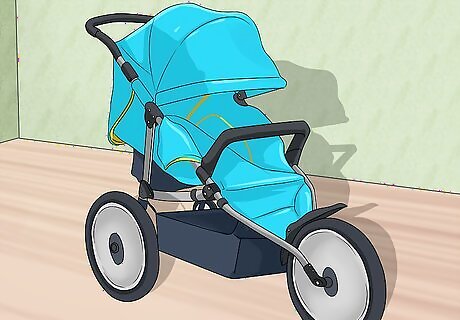
Go for versatility in an all-terrain stroller. These strollers are equipped with large wheels that are compatible with a wide variety of surfaces, from store floors to grass. They often have 3 wheels, with a front wheel that can swivel, or lock in place. Keep in mind that all-terrain strollers are heavy (often weighing up to 30 pounds) and bulky when folded up. Note that all-terrain strollers are typically not suitable for infants under 6 months, unless stated otherwise.
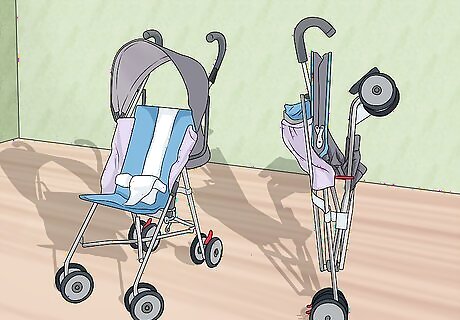
Consider an umbrella stroller if you are striving for portability. Umbrella strollers tend to be inexpensive and lightweight, and they fold up to about the size of an umbrella. However, they are not typically durable or suitable for newborns.
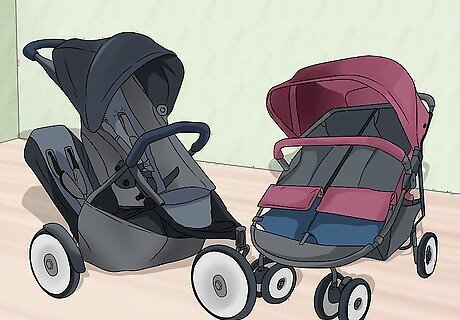
Look for a double or triple stroller if you have more than 1 child. These come in 2 styles: side-by-side or inline. They are a must-have if you have more than 1 child. Side-by-side strollers tend to be wide and bulky when folded. Inline models are better for children with an age gap, as one seat tends to have more recline and leg rest adjustment range that is necessary for young infants.
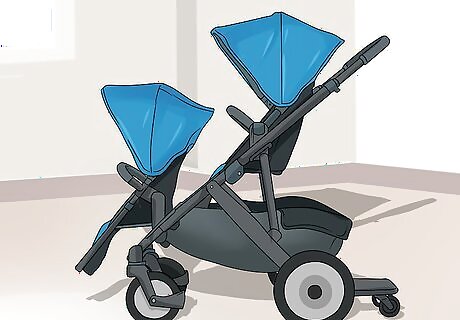
Get a convertible stroller if you prefer versatility and have more than 1 child. Convertible strollers can seat 1-2 children, as it comes with an easy-to-add second seat. These are great if you alternate between traveling with 1 or 2 children, or if your elder child has nearly graduated from their time in a stroller. Convertible strollers tend to be built to handle up to 100 pounds (45 kg), and are applauded for their longevity. On the downside, the heavy-duty material of convertible strollers can be frustrating when the stroller is seating only one child, as it will be heavier than traditional single strollers.
Finding Your Must-Have Features
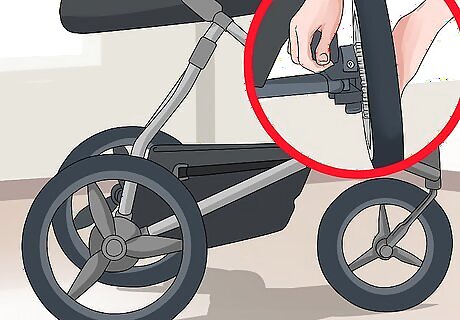
Select adjustable and all-terrain wheel options if needed. Being able to adjust and swivel the wheels can be a back saver; look for a stroller that has wheels which can be adjusted for more difficult terrain or for tight spaces. Swivel front wheels can make it easier to move around and the ability to lock the wheels straight ahead is useful for rough terrain or for high speeds (such as jogging).
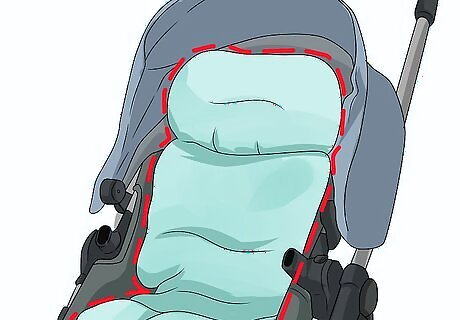
Look for padding and comfort. You will be able to tell the difference between a well-padded seat area and a flimsy one. Soft, cushy seats can encourage a restless toddler to stay seated during a longer shopping trip. Many times, seat liners can be purchased separately.
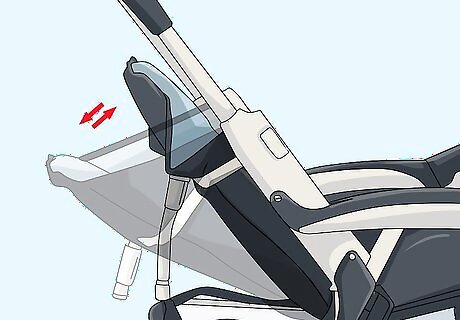
Look for adjustable backrest options. An adjustable backrest that allows the stroller to fully recline is necessary for young infants who have not yet learned to sit up. Plus, the ability to fully recline is great for when your child falls asleep.
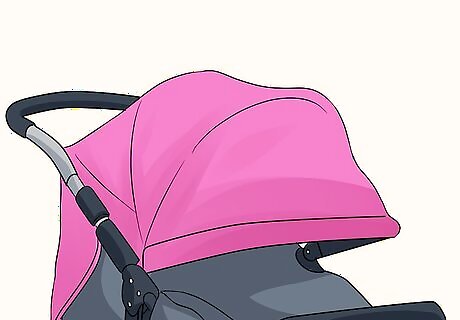
Get a canopy. A stroller should have decent shelter options to protect your baby from the sun and inclement weather. Some strollers have a wide brim, some have bug netting, and others even have a plastic waterproof feature that can be rolled down during rain. For visibility, choose a canopy with a clear window. Avoid lightweight fabric covers. Fully covering your stroller may unintentionally lead to a greenhouse effect, so instead go for options like umbrellas that create shade but do not restrict air circulation.
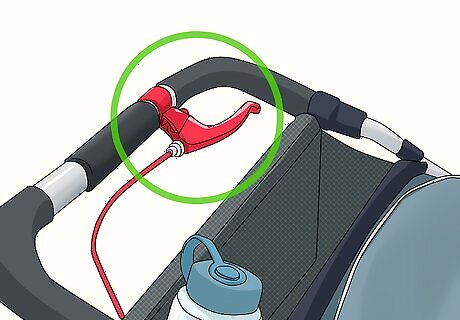
Consider if you need handbrakes. Most strollers come with the traditional foot-activated brakes, but many strollers also come with a second set of brakes on the handlebars. These are particularly useful if you intend to be traveling at high speeds, such as when you are jogging.
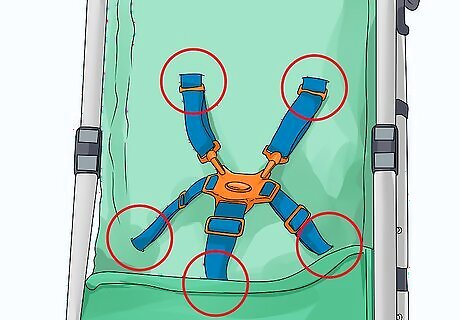
Look for a 5-point harness. Five-point harnesses attach to the seat at five different points—at each shoulder, at each hip, and between the legs where the harness buckles. These are safer than the alternative 3-point harnesses, which lack the additional attachment at the hips. If your child is in a rear-facing seat, the shoulder straps should be at or below the shoulder. In a front-facing seat, straps should be at or above the shoulder.
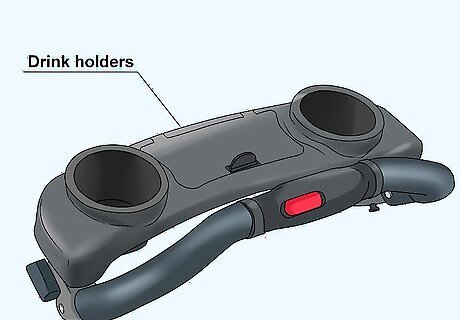
Consider what features will best benefit you as a parent. Strollers can include features such as drink holders, consoles that can hold your keys or diaper bags, and even speakers that connect to your smartphone to play music for you child. Strollers with larger wheels (e.g., joggers) will need their tires pumped up from time to time; look for a mini tire pump that is portable so that you don't put off pumping the tires up. Note how large the basket or storage space is on the stroller and determine if it will work well for you.
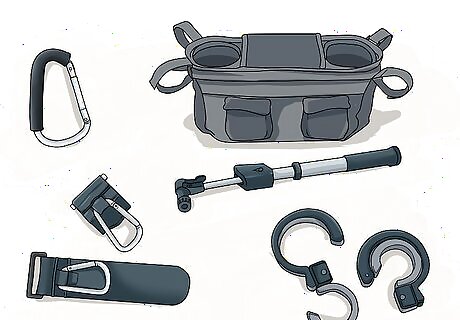
Purchase accessories separately as needed. For truly unique additions, consider checking Etsy or local craft shows. Take measurements. Be sure that accessories will fit your model before you purchase that large canopy or snap-on cup holder.
Testing and Buying Your Stroller
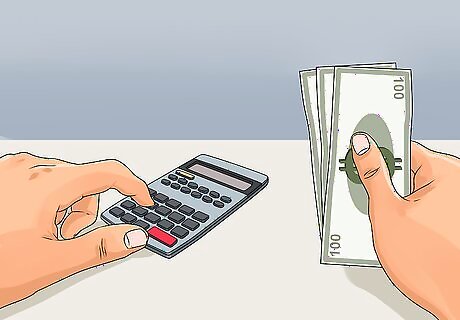
Have a budget. Before you even leave your home, have an idea of what you would like to spend on a stroller. Strollers can range from $20 to $1000, so have an idea of what features you would like to have, how durable a stroller is expected to be, and what you are comfortable spending.
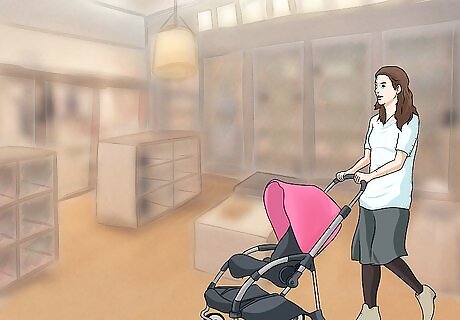
Test a stroller in an open store with plentiful aisle space. Make sure it feels stable under your hands and maneuver through aisles and around corners. Add weight, such as a bag, to ensure that the performance will not significantly change as your child grows.
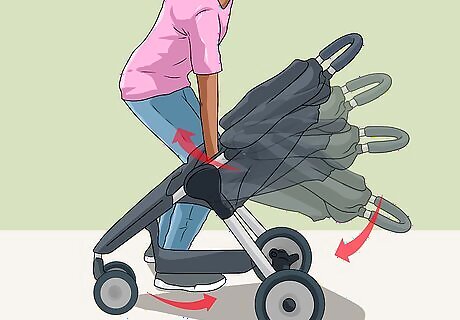
Open and close the stroller. A good stroller should be able to be opened with one hand and a foot. This enables you to keep one hand free to hold the baby as needed. At the same time, check the latch on the stroller to make sure that it is sturdy - some strollers have collapsed when this latch comes undone.
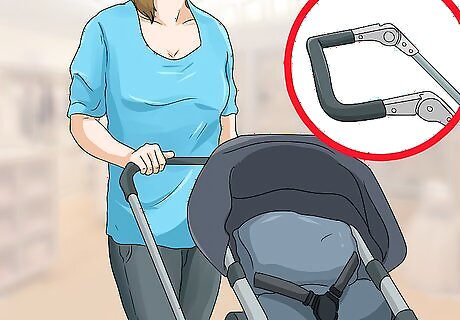
Look for a full-length bar and practice steering. Steering is much easier with a full-length bar across the top than with two handles. If a single bar stroller is not an option, look for a stroller with very strong handles that are comfortable to hold. In both cases, adjustable handles are a good option if you are taller or shorter than average.
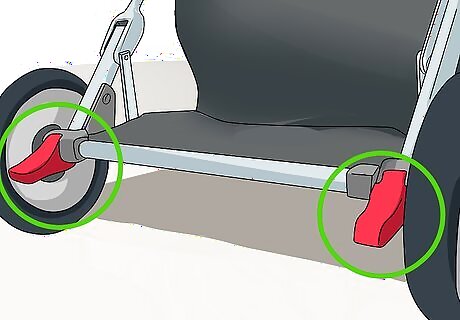
Test the brakes and swivel lock mechanism. To ensure that brakes are easy to use and make for a smoother, controlled, and safer ride, practice braking with the stroller up and down aisles. If the front wheel is maneuverable, test the locking mechanism to see if it dramatically impacts your ability to steer the stroller.
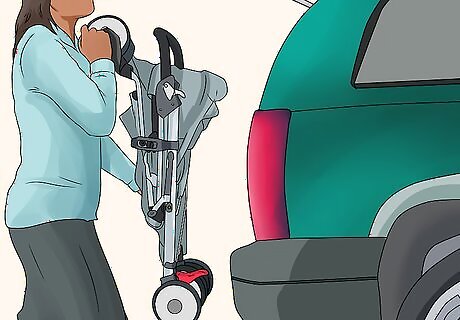
Ensure that it can be carried by you and that it fits where you need it to. Nothing worse than a stroller that you cannot lift and fit into the back of the car! Ensure that you are comfortable with the stroller's weight and that it fits in your car or in your designated storage space. If you travel often, look for a stroller with carrying straps.
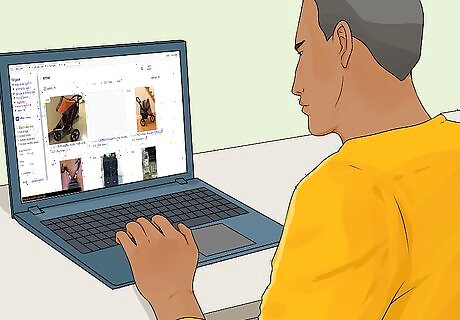
Consider resale value. If you do not anticipate having more children, you may want to sell your baby products after your child has grown. In this case, you may choose to invest in higher-quality merchandise that will retain value. Check websites like Craigslist to see what used strollers are selling for.
















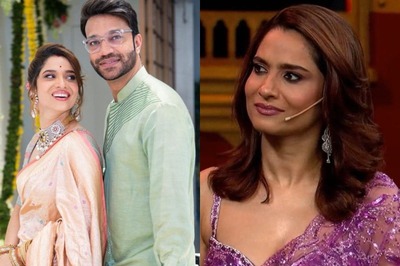
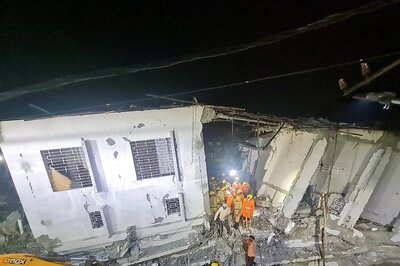
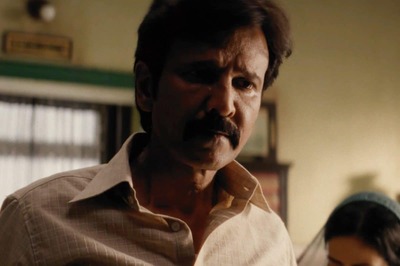
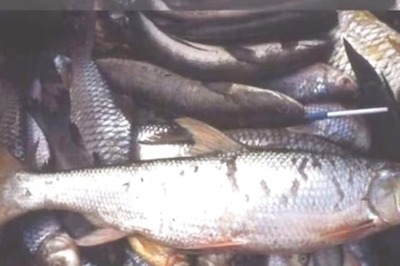
Comments
0 comment